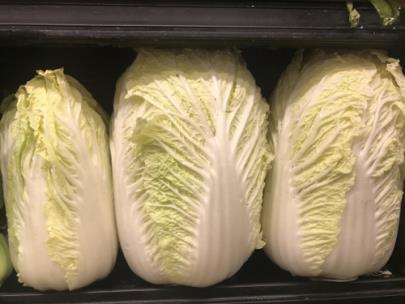
photo by John Nelson
Usually, I am not allowed to go grocery shopping, because I am accused of spending too much time reading the labels, and otherwise dawdling while looking at produce. In my defense, I claim being a botanist, but who isn’t fascinated by the diversity of plants and plant products available today in a well-stocked supermarket? Lots and lots of botany lessons, even if you are not buying.
So, the other day I was sent, alone, ostensibly to procure paper towels, frankfurters, and some adult beverages, and of course I was lured into the produce section, seduced by the display of fresh vegetables and fruits, some locally grown and harvested, and other items from far-away and intriguing locales. This was one of those produce sections at which cold mist is occasionally sprayed out of little nozzles (what fun!) to keep everything fresh, and to make us shoppers think that we are in a bird-bath. Two slightly dampened customers there seemed to be puzzled by this particular and somewhat peculiar vegetable, and they were audibly discussing their curiosity about it. One of them offered that it must be a new sort of lettuce, perhaps some kind of endive, and his attendant seemed to be accepting this mistake. I sensed a botanical opportunity, and moved in, gently suggesting to them the identity of the thing in question, and what it was good for. There were slightly raised eyebrows. I like to think that they were appreciative eyebrow-raisings. The botanist moved along with his buggy.
Our Mystery Plant is not at all a lettuce, which belongs to the sunflower family (Asteraceae), but rather a member of the mustard family (Brassicaceae). This family has been known since antiquity as an important food source, and indeed, this is the family that supplies us with cabbage, broccoli, turnips, kohlrabi, Brussels sprouts, rapini, watercress, radish, horse-radish (not the same as radish), and of course, for the sushi-lovers (or haters), wasabi. In fact, it is said that all of the members of this family are edible, and beyond that, quite nutritious, featuring vitamins, antioxidants, and in several, it is thought, offering anti-tumor activity. What accounts for the sharp flavor of many of these plants is a variety of “mustard oils,” a series of sulfur-bearing compounds, which in nature are useful for dissuading attack by insects. The mustard family is known not just for its contributions to our dinner tables, but for the marvelous garden species it offers, including sweet alyssum, candytuft, honesty, wallflower, and fragrant stocks. There are also a number of fairly nasty little weeds, such as yard cress, poor-man’s pepper, and shepherd’s purse. “Garlic mustard” is a particularly obnoxious European weed, which has unfortunately become a common interloper in the northeastern USA.
This Mystery vegetable is indeed related to what we call one of our garden-variety “cabbages”, but it belongs to a different species, with a different chromosome number: let’s not get into that. But it is wonderful stuff, especially sliced up and added to your stir-fry.
[Answer: "Napa cabbage", Brassica rapa]
* * *
John Nelson is the retired curator of the A. C. Moore Herbarium at the University of South Carolina in Columbia S.C. As a public service, the Herbarium offers free plant identifications. For more information, visit www.herbarium.org or email johnbnelson@sc.rr.com.